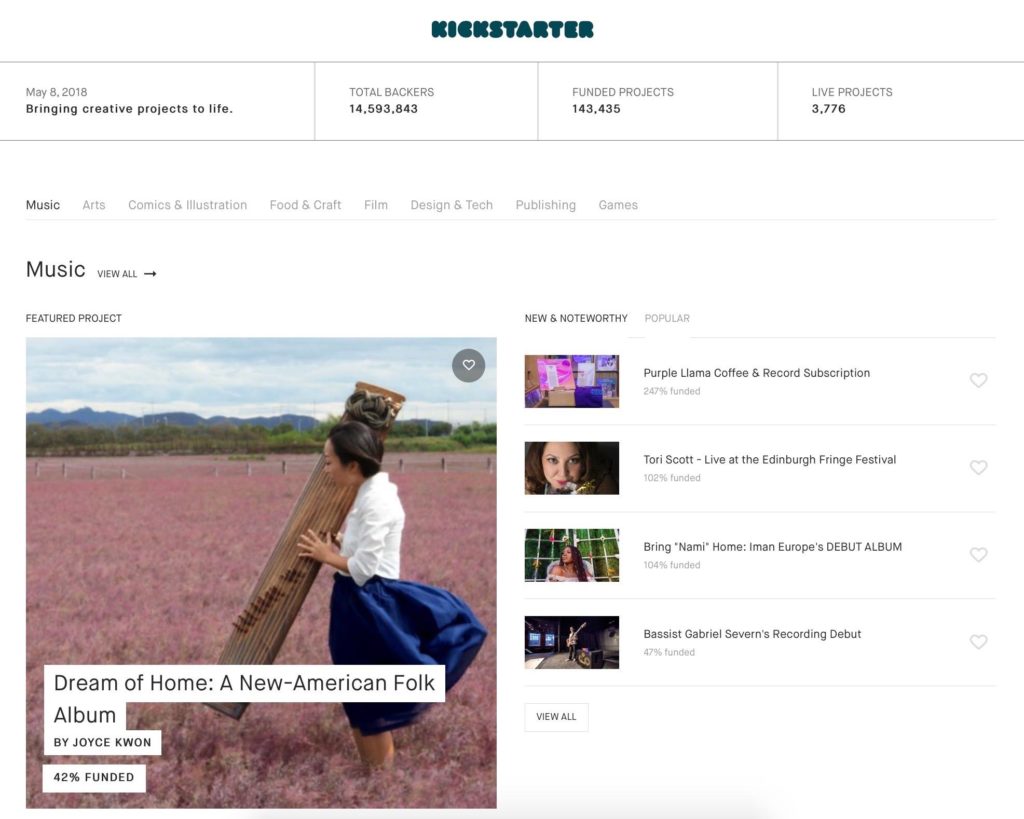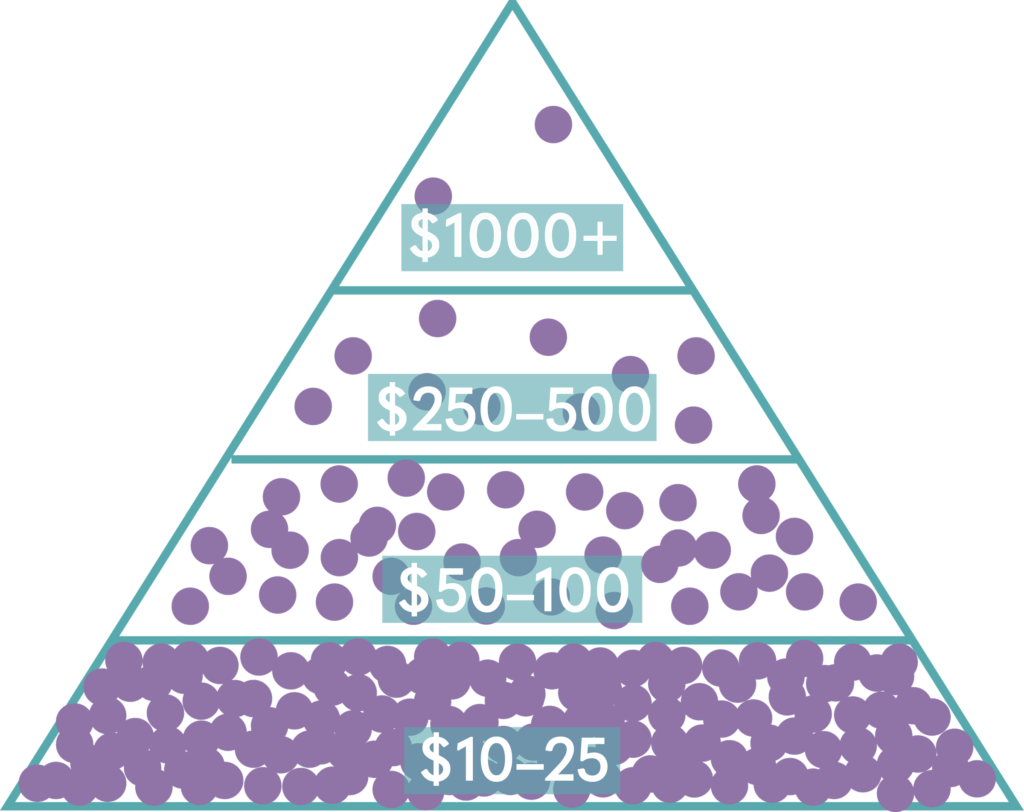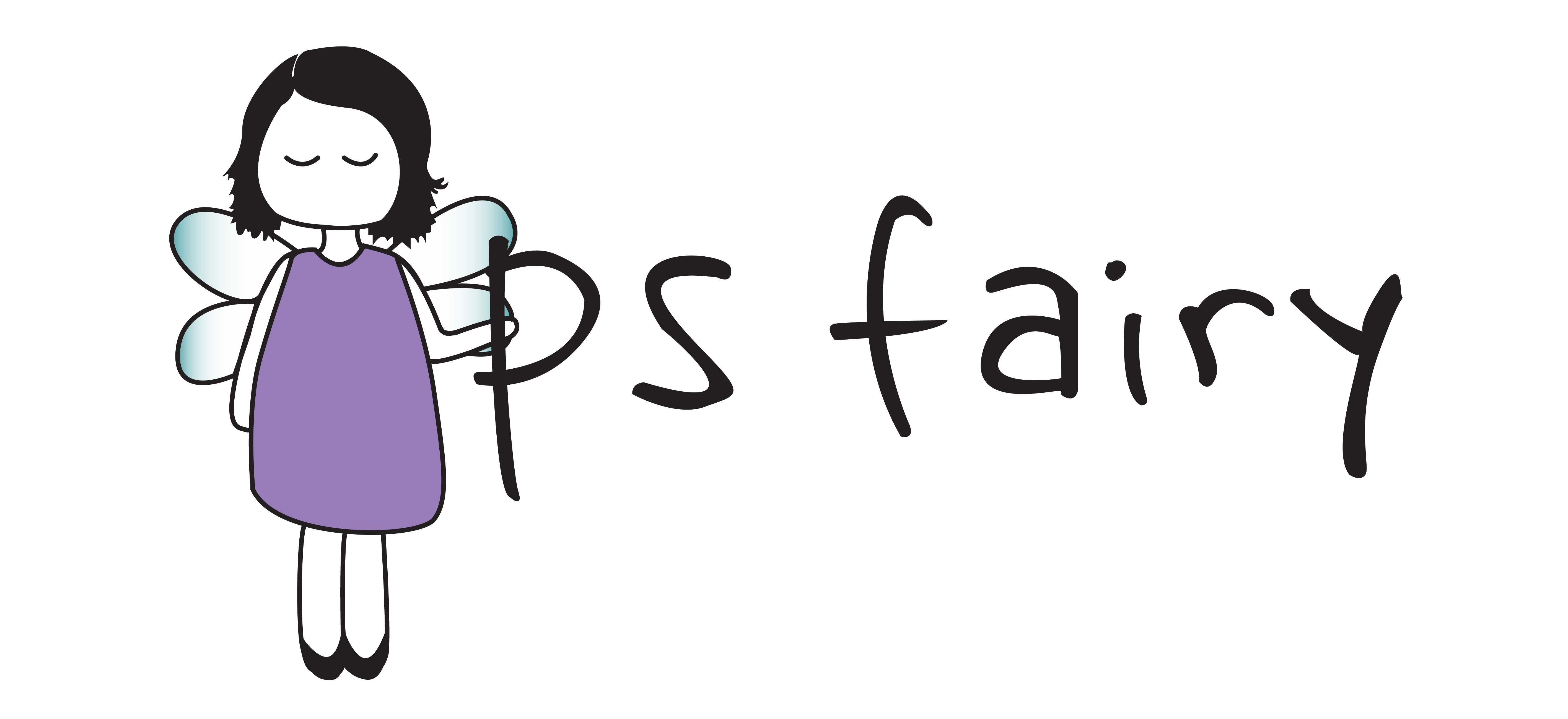06 Dec How to Successfully Fund a Kickstarter Album Campaign
It was launch day of my album Kickstarter after months of preparation—conceptualizing and strategizing, gathering footage and editing the pitch video, writing and scrutinizing every word of the copy, brainstorming relevant rewards, and roping in friends and family for their feedback and help. Feeling satisfied with my campaign presentation, I was out running errands to relax and celebrate (prematurely as it turns out) when my sisters called to check in and see that my campaign was off to a good start. They asked about my funding pyramid and I was like “… ?? … ? What is a funding pyramid?” Thus began my uphill climb in running the Kickstarter campaign for my debut album. I learned a lot in the process from what I did wrong and what I did right, and all in all, it was a success: My campaign ended up front and center on the homepage of Kickstarter and I hit my numerical goals ($15K in pledges from 200+ backers). I’ll share my learnings on how to successfully fund a Kickstarter album campaign in this post.

Pitch
First, let’s briefly talk about the pitch itself—the video, images, and story on your Kickstarter page. So you have a project—your most ambitious yet. You’re excited and you just know it’s going to be amazing with the best musicians involved. The thing is, unless it’s your mom or a doting friend, people don’t care about how great your album is going to be. They care about how it will benefit them, how it’ll connect to them. Few projects are about the virtuosity or technicality of the craft itself. Hone in on the essence of the project. What’s the inspiration for the album? Or how does it fit into a greater context?
For me, the album was about longing for home as a first-generation Korean American and Asian American and so the audience I wanted to connect with was not people who love indie music, or even people who are interested in gayageum music (the traditional Korean instrument was a central part of the album), but Asian Americans who understand and empathize with the experience of belonging neither here nor there. Hence, I planned my month-long campaign to coincide with Asian Pacific American Heritage Month in May, and I suspect its timeliness and relevance is what landed it on the Kickstarter homepage for a week. Please note that having a laser-clear focus on a specific demographic is what got the project on the homepage that everybody sees. On the other hand, if I had made a for-everybody campaign—music for everybody of all ages—it would have spoken to nobody.
I carefully crafted my message, weaving in the folktale of stone soup in my story and borrowing a friend’s camera to give a glimpse into the recording process, and thought through each reward level. While many donors may not care much about the reward itself, it’s great to have some fun, well-thought-out rewards, because it becomes a part of the whole feel of the campaign and gives you more to share online during the campaign, keeping things interesting instead of saying album album album every day. There were a number of people—strangers—who reached out during the campaign to say they could really feel my heart for music through the Kickstarter page. That’s what you want. You want them to feel your heart for the project, whether it’s sincere or irreverent, exuberant or pensive.
Fundraising
Putting together the pitch was the easy part for me, having worked at a creative agency for 6 years, editing many a proposal, used to thinking from the viewpoint of the recipient. Fundraising, on the other hand, was new territory and I fumbled at the start. I set a goal of $15,000 because whether it’s $10,000 or $20,000, I’d have to do the same amount of work upfront putting together all of the collateral. And I figured I only have one debut album and I was going to tap all of my networks for this so I wanted to feel a bit ambitious in my goal. And like I had heard, it really is a job of its own to run a campaign. It’s not free money; it’s time and energy you can spend elsewhere.
SET YOUR FUNDRAISING GOAL BASED ON YOUR NETWORK
Don’t do what I did! It’s far from the best way to determine your fundraising goal and I was only able to maneuver my way with coaching from family with professional experience in fundraising. Why I didn’t think to ask before about the soundness of my fundraising strategy, or lack thereof, prior to the launch, I have no idea … It would have saved me some grief.
The funding pyramid will help you map out how you will reach your goal—who can you expect to make up the bottom of the pyramid, the $10 and $25 donations? What about the $75 and $100 donations? The $250 & $500? The $1000 and up? Unless you are well-known enough to attract a thousand actively engaged fans willing to pledge at the lower levels, you’ll need people to donate larger sums to make a five-figure goal. You should also plan for the possibility that someone you were hoping would donate at a higher tier doesn’t come through.
Who will make up each purple dot in the pyramid below? For my Kickstarter, I drew a pyramid (with more bricks than the simplified representation below) and wrote down names of would-be backers, placing each at the level I thought they might donate.

The amount you set as the goal should be determined by how much your existing network can support, a figure you can extract from your unique funding pyramid. I’ve seen prominent musicians fall short of crowdfunding goals that they seem to have set based on the assumption that their fame will automatically translate to funds. It doesn’t necessarily work that way (and doubly so if their core audience is older folks who are unaware of the existence of crowdfunding online). Even the sum of online fans do not directly translate to backers: the majority of your Instagram followers will not open up another webpage, take out their wallet, and fork over money to show that kind of support.
It goes without saying that the number has to work with real costs. If your network can support $10,000 but it costs $20,000 to make the album, you’ll need to find a way to make up the difference.
MAKE A SPECIFIC ASK
To make the the funding pyramid come to life, it would be prudent to make a specific ask of individuals. Give a range so that your contacts have an idea of approximately how much you’re counting on from them. As an example, someone was planning on donating $25 or so to a candidate in a local mayoral race. The campaign texted her with an ask of $50–500 and she was glad to donate a couple hundred, once she was aware of the level of expected involvement.
I did this wrong: Immediately after my campaign went live, I sent group emails and direct emails saying I’d appreciate them donating/sharing as they feel inclined. Then after learning about the funding pyramid, I scribbled one down on a sheet of paper and sent a flurry of emails to some close friends later on in the day asking for specific amounts. Some had already donated but because not all backer names are disclosed until the end of the campaign, I couldn’t tell who had made what donation.

Generosity is relative. $10 from a friend who’s been couch-surfing while looking for work might be generous while $10 from a multi-millionaire might feel more like loose change. To make a specific ask, you need to gauge a number of things including your personal relationship and history and the person’s financial situation. There are unknowns (e.g., someone may already have giving commitments that don’t allow them to meet your ask) and you may be surprised by both unexpected largesse and puzzling radio silence.
It may seem impolite to size up someone’s giving potential and it can be uncomfortable to ask for money, let alone an x–y amount of dollars. If you don’t ask, you’re leaving it up to the donors to assess the level of investment in your project, and they may have no idea you’re hoping they’ll step up. (I did notice that a group of good college friends donated uniformly in a narrow range, with the exception of a couple outliers below and above, without me asking for a specific sum. I wouldn’t count on that unless you’re intimately familiar with the giving culture within a specific community.)
I wish I had made a specific ask in my initial direct emails instead of having to backtrack, and that I had had more tact in setting the range of the ask—maybe starting with a number they’d almost surely be comfortable with and going up from there—instead of punching out emails in damage control mode, focused solely on ensuring the numbers added up, with how the recipient of such an email might feel as an afterthought.
MAKE INDIVIDUAL ASKS
Contact people you know directly and individually. This goes along with making a specific ask but it also applies to those you hope will pledge in any amount. Don’t just send a couple bcc emails and expect those you think you can count on to follow up. Sending one-on-one communication will be much more effective.
I read somewhere that you shouldn’t count on a Kickstarter as marketing/PR but I did look at it as a marketing opportunity, setting a personal goal to break 200 backers, and in the end, it did expand my audience. The individual outreach was absolutely critical in helping me reach both 200+ backers and the dollar amount.
PLAN TO HIT A THIRD OF THE GOAL WITHIN THE FIRST WEEK
There’s probably data out there saying that successful campaigns hit at least a third of the total goal within the first week of the campaign, and it makes logical sense. You want momentum to see it through the slower middle and to the end, where the pace will pick back up. Show that the campaign is on the way to securing the funding. If something looked like it’ll flop, would you want to get involved?
Extending the campaign beyond the recommended month is unlikely to be to your benefit. Create a sense of urgency, establish milestones in the timeline, and lay out tactics for reaching the milestones.
SKIP THE DOLLAR TIER
People tend to donate a step above the lowest tier so they’ll go for $10 if there’s a $1 tier, $20 if it starts at the $10 tier. I wanted a $1 tier for the financially strapped to feel welcome to be involved but realized it wasn’t necessary to break that out since Kickstarter clearly displays an option to enter any amount you want (and I did get several $1 pledges).
Know your audience
I translated my whole campaign to Korean because I knew that a significant portion of my donors would be Korean. And I printed up postcards in Korean with the Kickstarter link for my mom to share in her circles. I realized quickly that the vast majority of older Korean Americans, as well as Korean Koreans, just will not use Kickstarter. But many hand-delivered envelopes of crisp cash with notes of encouragement after reading the postcard and watching the video in Korean (for those who surf the web). Cash was a welcome alternative since there would be no credit card processing and Kickstarter fees taken out.
Meet your donors on the platforms they use. It’s futile to try to change behavior for your short campaign. This applies not just in accepting but also in soliciting donations. Text them if you normally text, send a Facebook message if that’s how you communicate—find them where they are.
Kickstarter vs. other platforms
Though there are many platforms for crowdfunding, I knew I’d use Kickstarter. Kickstarter has become a generic trademark that is used interchangeably with the term “crowdfunding” itself, much like “Kleenex” is for tissue. That’s one less thing to explain—many already know what a Kickstarter is. I’d heard a couple alarming stories about Indiegogo, like a campaign being closed prematurely, and also didn’t have a great impression from interacting with them doing some bookkeeping for an arts nonprofit, so that was ruled out immediately. Gofundme is for tragedies, natural disasters, hospital fees, venues on the cusp of closing, etc. ArtistShare is for Maria Schneider. Patreon is for ongoing support from patrons, not for a finite project.
Yes, Kickstarter is “all or nothing” but if you plan the fundraising aspect of it carefully along with polishing your pitch for the beautiful album you’re making, you don’t have to have that platform particularity deter you. Like many other platforms, it also takes a fee. In my case, I found that organic discovery through being highlighted by Kickstarter neatly offset that cost. In other words, the amount of donations I got from strangers who found me on Kickstarter matched or exceeded the amount I had to pay in Kickstarter and processing fees (~8.5% of total). You can expect that donors who stumble onto your campaign, who are new to your work, will pledge lower tiers, mainly in the $10–25 range.
Research & feedback
Be sure to read the Kickstarter blog for tips. Sign up for their newsletters to see what kinds of projects get amplified, what does well, and what doesn’t work. I had seen many a jazz and classical musician get the “Project We Love” designation (which can help more backers find you) so I figured I could get that with the unique angle of my project. Find campaigns similar to yours and see what aspects of it you want to replicate in your own. Do the research.
Get quality feedback. Maybe a friend who is good at spotting typos would be willing to look at your story for the campaign, and another with a good eye for visuals can help you select images, Have someone review your video—could it be trimmed down? Most importantly, do you have a defined audience and does your pitch tell them why they should care?
Feel free to comment below with questions and I’ll try to answer so that everyone can benefit from this resource. And if you need personalized help, you can contact me for consulting, strategy, and copywriting/editing.
Finally, remember that lots of people love to give. Giving makes people feel good. Someone whose livelihood depends on donations told me that he frames his donor-recipient relationship as a partnership, rather than charity. A partnership may be a stretch for many albums, but might fit for some projects. If you’re making art as part of a clearly articulated effort to do good in the world, people may well want to join in with funding, if that’s a resource they can offer.
Best wishes on your Kickstarter campaign!


No Comments